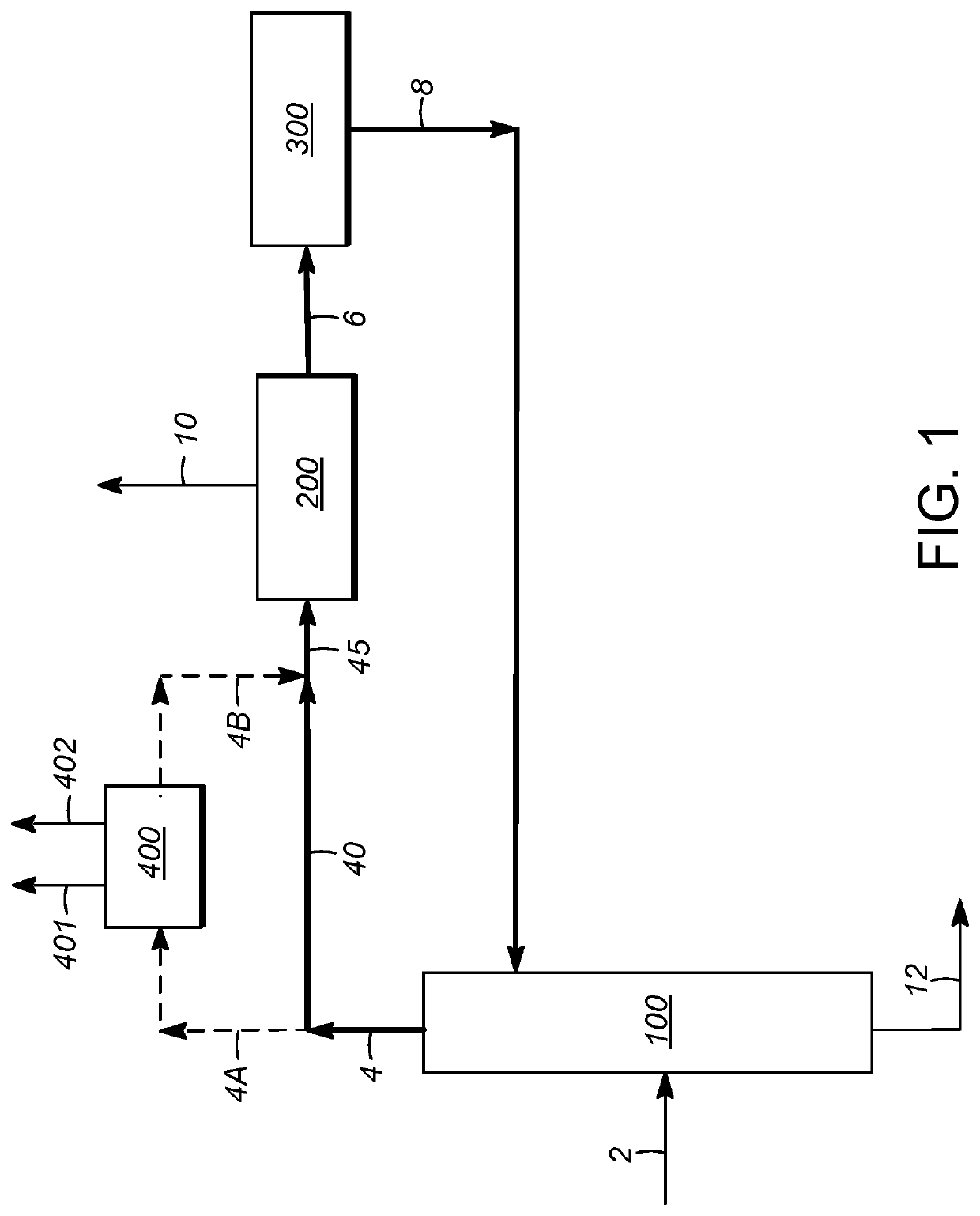Integrated processes for para-xylene production
a technology of para-xylene and integrated processes, which is applied in the direction of sustainable manufacturing/processing, hydrocarbon preparation catalysts, organic chemistry, etc., can solve the problems of uneconomical methods for separating ethylbenzene through intensive distillation, the inability to perform economically the separation process of xylene using distillation, and the accumulation of certain components, so as to improve the yield of liquid products, reduce the cost of production, and reduce the effect of hydrogen consumption
- Summary
- Abstract
- Description
- Claims
- Application Information
AI Technical Summary
Benefits of technology
Problems solved by technology
Method used
Image
Examples
example 1
[0107]Using process simulation, the economics of para-xylene production in a conventional aromatics complex were compared to those utilizing integration with extractive distillation, and in particular utilizing distillation with an extractive agent compound as described above, for separation of ethylbenzene from the process flow loop. The comparison was based on this separation occurring between the para-xylene separation zone and xylene isomerization zone, as illustrated in FIG. 2. In addition to accounting for the upstream reformate splitter operation, the steps of xylene column distillation, para-xylene separation, and isomerization, as described above, were simulated. To improve the applicability of the simulations to commercial processes, the operation of a C7 (toluene) / C9 transalkylation (disproportionation) unit was also included in the modeling. Para-xylene separation in each case was based on crystallization.
[0108]Three separate cases were identified and analyzed. The first...
PUM
| Property | Measurement | Unit |
|---|---|---|
| temperature | aaaaa | aaaaa |
| absolute pressure | aaaaa | aaaaa |
| boiling points | aaaaa | aaaaa |
Abstract
Description
Claims
Application Information
 Login to View More
Login to View More - R&D
- Intellectual Property
- Life Sciences
- Materials
- Tech Scout
- Unparalleled Data Quality
- Higher Quality Content
- 60% Fewer Hallucinations
Browse by: Latest US Patents, China's latest patents, Technical Efficacy Thesaurus, Application Domain, Technology Topic, Popular Technical Reports.
© 2025 PatSnap. All rights reserved.Legal|Privacy policy|Modern Slavery Act Transparency Statement|Sitemap|About US| Contact US: help@patsnap.com



